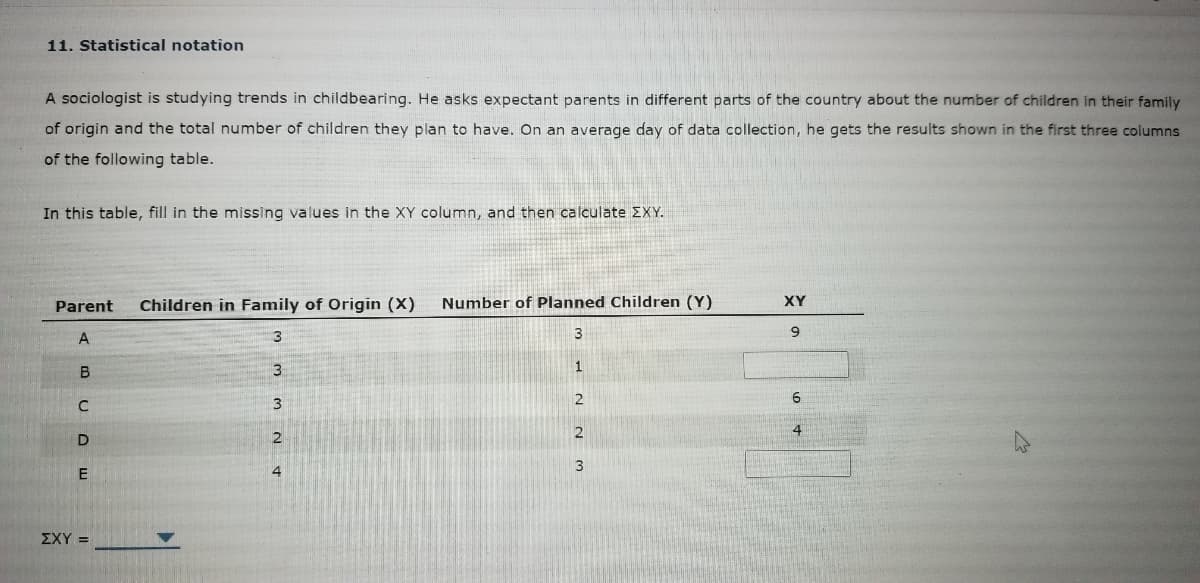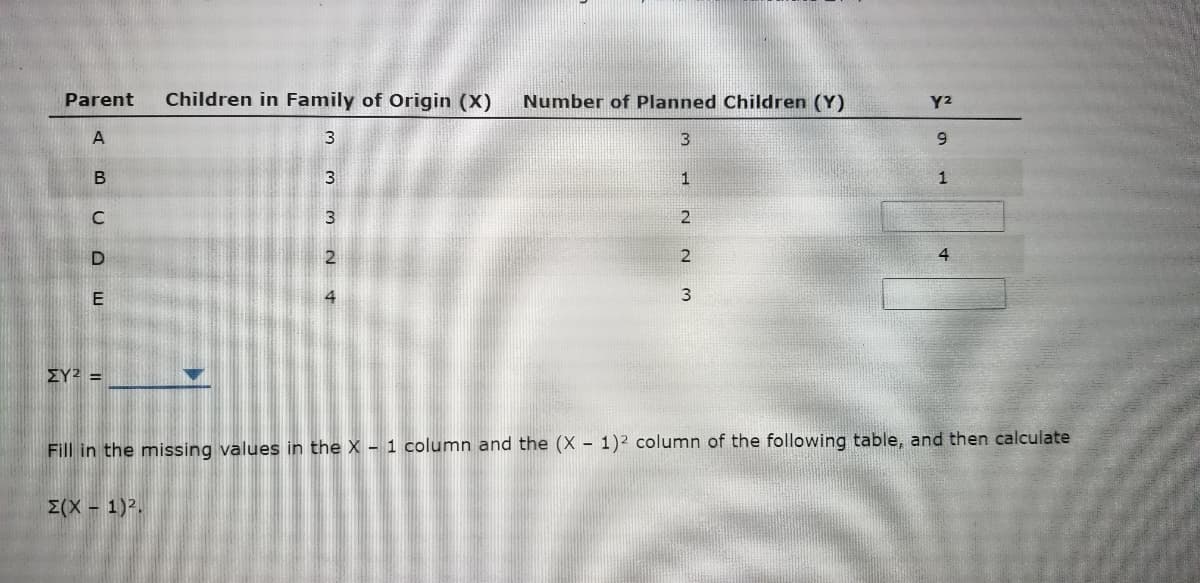A sociologist is studying trends in childbearing. He asks expectant parents in different parts of the country about the number of children in their family of origin and the total number of children they plan to have. On an average day of data collection, he gets the results shown in the first three columns of the following table. In this table, fill in the missing values in the XY column, and then calculate EXY. Parent Children in Family of Origin (X) Number of Planned Children (Y) XY B. 3. 1 3 D ΣΧΥ-
A sociologist is studying trends in childbearing. He asks expectant parents in different parts of the country about the number of children in their family of origin and the total number of children they plan to have. On an average day of data collection, he gets the results shown in the first three columns of the following table. In this table, fill in the missing values in the XY column, and then calculate EXY. Parent Children in Family of Origin (X) Number of Planned Children (Y) XY B. 3. 1 3 D ΣΧΥ-
Linear Algebra: A Modern Introduction
4th Edition
ISBN:9781285463247
Author:David Poole
Publisher:David Poole
Chapter2: Systems Of Linear Equations
Section2.4: Applications
Problem 2EQ: 2. Suppose that in Example 2.27, 400 units of food A, 500 units of B, and 600 units of C are placed...
Related questions
Question

Transcribed Image Text:11. Statistical notation
A sociologist is studying trends in childbearing. He asks expectant parents in different parts of the country about the number of children in their family
of origin and the total number of children they plan to have. On an average day of data collection, he gets the results shown in the first three columns
of the following table.
In this table, fill in the missing values in the XY column, and then calculate EXY.
Parent
Children in Family of Origin (X)
Number of Planned Children (Y)
XY
A
3
9
3.
1
C
4
D
3
E
4.
ΣΧΥ-

Transcribed Image Text:Parent
Children in Family of Origin (X)
Number of Planned Children (Y)
Y2
A
3
6.
1
2
4
ΣΥ2
Fill in the missing values in the X - 1 column and the (X - 1)2 column of the following table, and then calculate
E(X - 1).
Expert Solution
This question has been solved!
Explore an expertly crafted, step-by-step solution for a thorough understanding of key concepts.
This is a popular solution!
Trending now
This is a popular solution!
Step by step
Solved in 2 steps

Recommended textbooks for you

Linear Algebra: A Modern Introduction
Algebra
ISBN:
9781285463247
Author:
David Poole
Publisher:
Cengage Learning

Algebra & Trigonometry with Analytic Geometry
Algebra
ISBN:
9781133382119
Author:
Swokowski
Publisher:
Cengage


Linear Algebra: A Modern Introduction
Algebra
ISBN:
9781285463247
Author:
David Poole
Publisher:
Cengage Learning

Algebra & Trigonometry with Analytic Geometry
Algebra
ISBN:
9781133382119
Author:
Swokowski
Publisher:
Cengage
